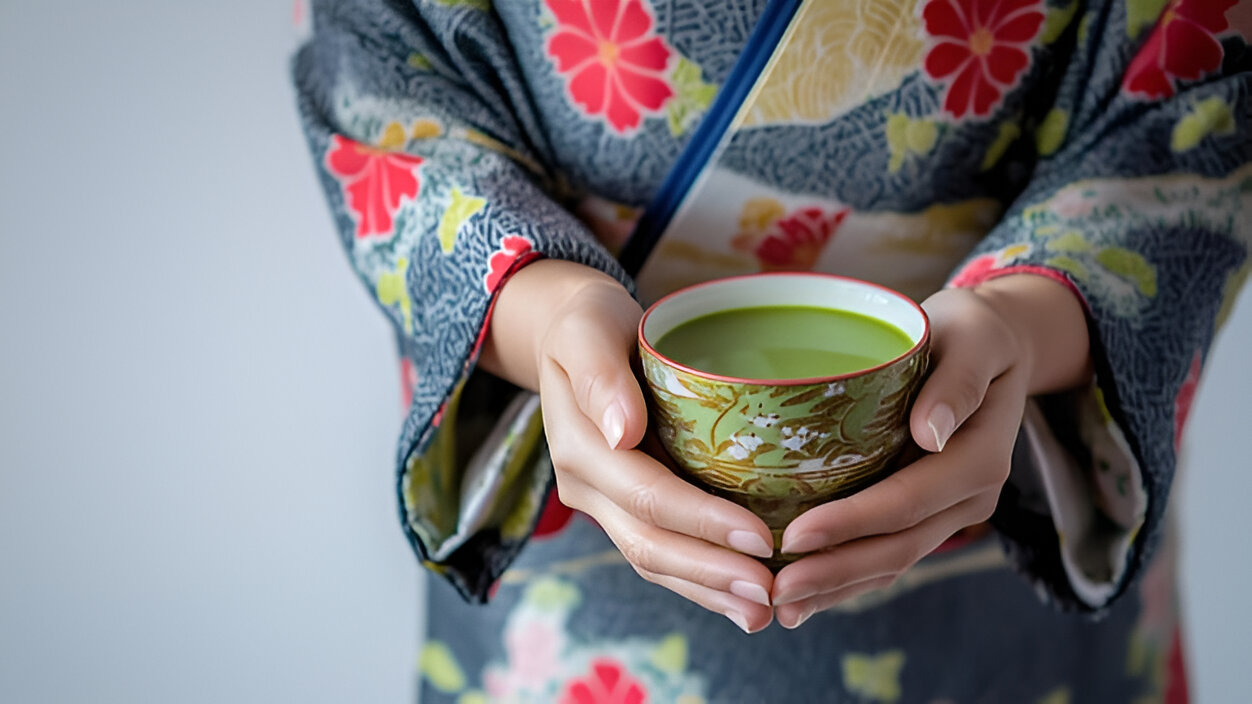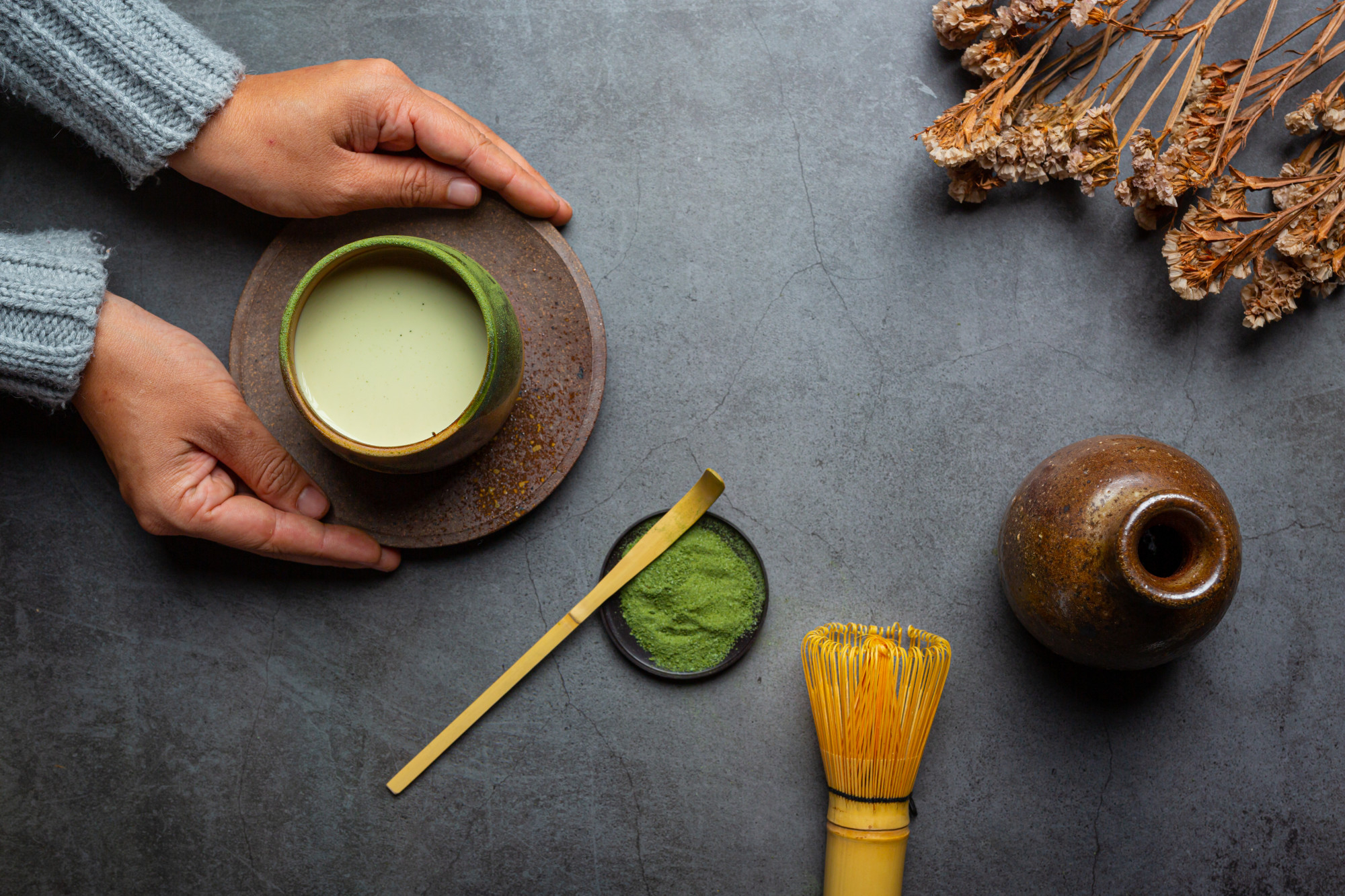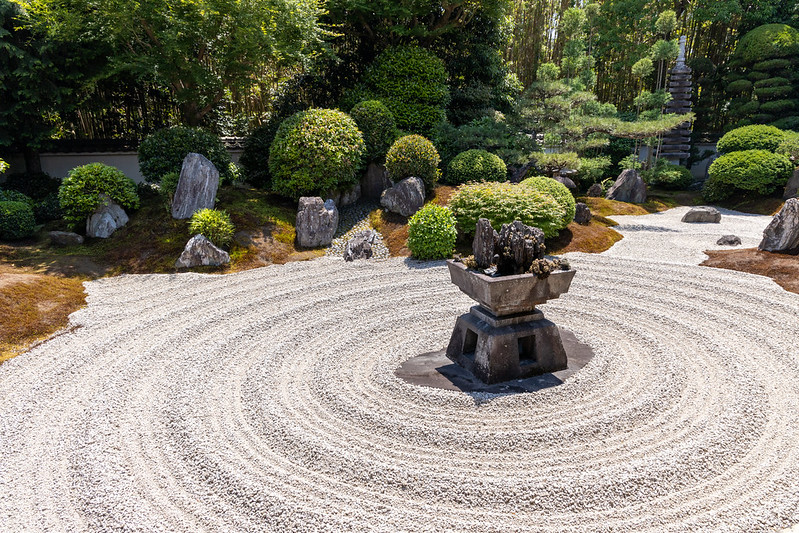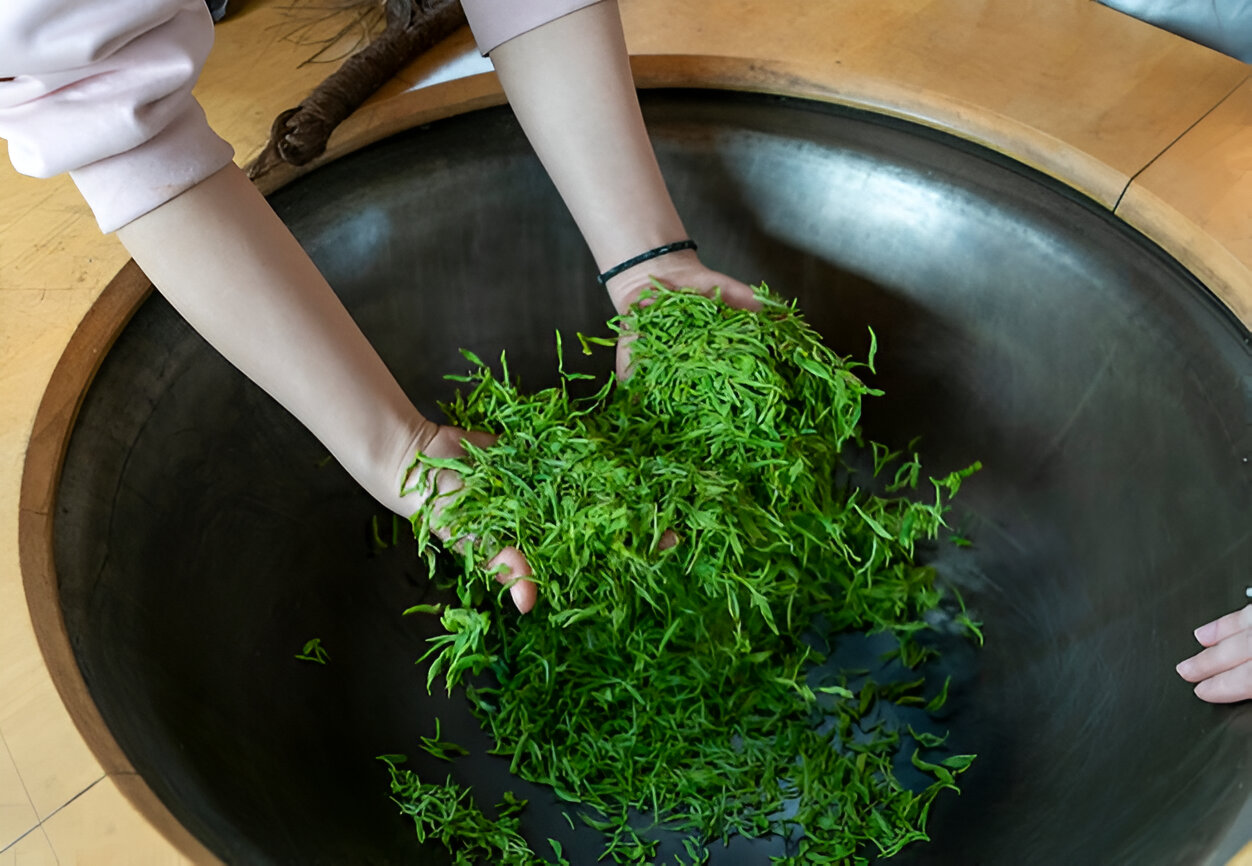
Japanese tea was first introduced from China in the Nara period (710–794 CE), initially used in temples for meditation and medicine. In the Kamakura period (1185–1333 CE), Zen monk Eisai brought back tea seeds from Song China and spread powdered green tea among monks and samurai. By the Muromachi period (1336–1573 CE), competitive tea-tasting and lavish displays of Chinese art objects had become fashionable, known as “shoin-style tea.” In contrast, Sen no Rikyū (1522–1591) emphasized the aesthetics of wabi and sabi: wabi finds richness in simplicity and imperfection, while sabi appreciates quiet beauty in the passage of time. His small tea huts and rustic gardens in Kyoto embodied harmony with nature and the spirit of ichi-go ichi-e—treasuring each encounter as once in a lifetime—transforming tea into a path of self-reflection. His legacy continued through the three Sen families—Omotesenke, Urasenke, and Mushakōjisenke—which still shape Japanese values of wa-kei-sei-jaku (harmony, respect, purity, tranquility) today.



Wabi: A sense of richness in simplicity and imperfection—finding beauty in the humble, rustic, and quiet.
Sabi: The serene beauty of age, patina, and the passage of time.
Influenced by Zen Buddhism, wabi-sabi was refined by tea masters such as Murata Jukō, Takeno Jōō, and Sen no Rikyū, who turned away from luxury to create wabi-cha—a simple, introspective style of tea.
Tea huts, rustic gardens, and the careful choice of plain utensils embody this philosophy, guiding participants toward mindfulness and the spirit of ichi-go ichi-e (treasuring each unique encounter).
Sencha (煎茶)
The most common Japanese tea, accounting for about 70% of production. Known for its refreshing aroma, balanced astringency, and clean finish.
Gyokuro (玉露)
A premium shaded tea, rich in the amino acid theanine. Characterized by an intense umami flavor and natural sweetness.
Matcha (抹茶)
Finely ground powder made from shaded tencha leaves. Vibrant green color, smooth sweetness, and umami. Used in tea ceremony as well as sweets and beverages.
Hōjicha (ほうじ茶)
Roasted sencha or bancha. Distinct toasty aroma, light and refreshing taste, with lower caffeine—suitable after meals or before sleep.
Genmaicha (玄米茶)
A blend of green tea (sencha or bancha) and roasted brown rice. Offers a nutty, toasty fragrance with a mild, balanced flavor.
Bancha (番茶)
Harvested later than sencha. Light, mild, and less astringent; an everyday tea enjoyed for its simplicity.
Tamaryokucha (玉緑茶 / Guricha)
Curly-shaped tea leaves, mainly produced in Kyushu. Fresh, mild, and slightly sweet flavor.


No account yet?
Create an Account